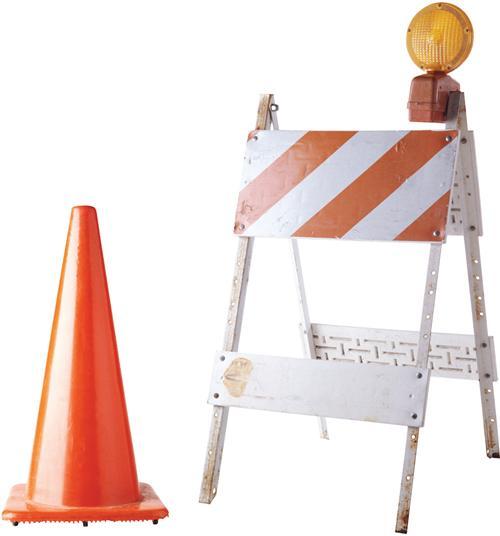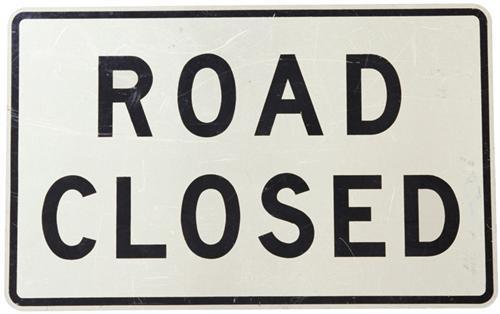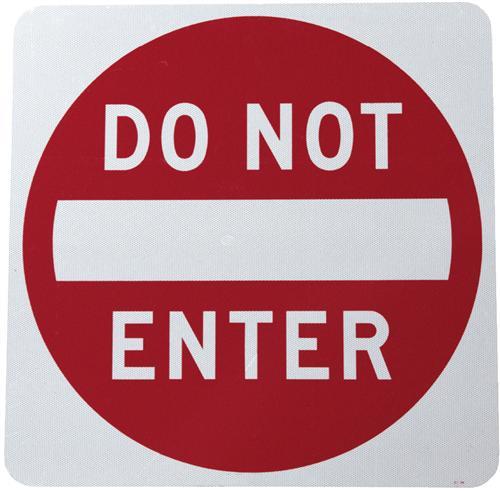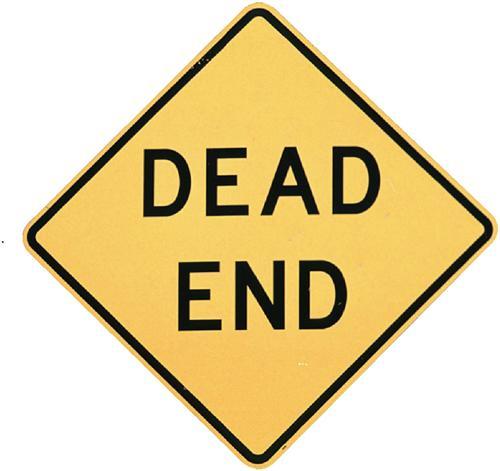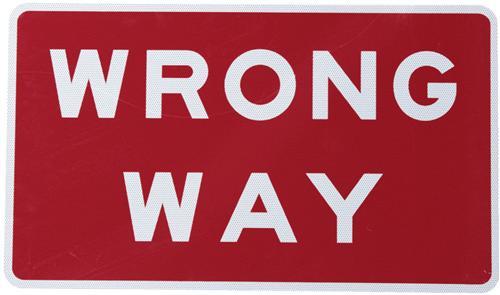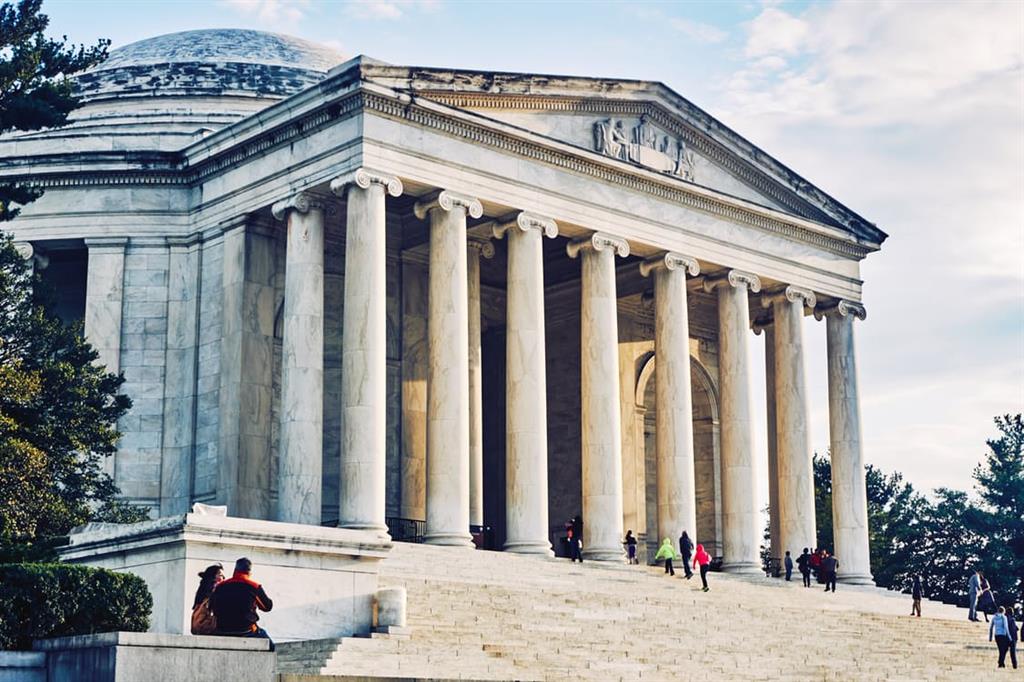Sign up for the Family Tree Newsletter! Plus, you’ll receive our 10 Essential Genealogy Research Forms PDF as a special thank you.
Get Your Free Genealogy Forms
"*" indicates required fields
You’ve traced Great-great-grandpa Jonah back to the old country in the 1830s, but there the trail suddenly goes cold. Who are his parents, your third-great-grandparents? You haven’t a clue. It’s as though Jonah simply materialized out of thin air (or, just like his Biblical namesake, was spat out of a passing whale).
Maybe you’ve painstakingly documented Great-grandma Edna from one census back to the next, even working around that pesky burned 1890 enumeration. Then she and her whole family mysteriously disappear. They should be in the 1870 Kansas census-but they’re not. What happened? Did a Kansas tornado sweep up poor Edna and carry her clan off to Oz?
Sound familiar? It’s the genealogist’s nightmare: Your patient progress in discovering your family history comes up against the dreaded Brick Wall. Those darned ancestors of yours have pulled a fast one and left you banging your head in frustration. Maybe their records have disappeared, the courthouse has burned or your kin simply aren’t where they’re supposed to be. Perhaps they are there, but you can’t find them in the morass of people with the same last name, or the maiden-name dilemma has stopped you. Or you’ve reached the point where your ancestors “crossed the pond,” only to have their trail sink into the Atlantic.
ADVERTISEMENT
Don’t give up! Your brick-wall problems can be beaten. You just have to learn some tricks for going over and around the roadblocks to your family’s past. Some of these “research kick-starters” borrow from the techniques of professional genealogists. Others—don’t tell!—bend the rules a bit. All 31 ideas can help you find new genealogical avenues, so you can resume your research.
Face it: A brick wall won’t make a very pretty picture in your family album. So let’s start busting.
Going around rather than through
ADVERTISEMENT
1. Work sideways with siblings and cousins.
The most obvious way to get to the other side of a brick wall is to go around it. So start by pursuing parallel branches of your family tree: If you know the names of Jonah’s brothers and sisters, try searching for their parents, just as if these siblings were your direct line. The parents of your ancestor’s siblings, after all, are your ancestors, too. If you don’t know of any siblings, cousins offer the next-best clues. Find their parents’ names and then work sideways to your ancestor—the brother or sister of Jonah’s aunt or uncle. You often can identify potential relatives using marriage records: If somebody with the same last name is listed as a witness to the marriage, odds are he’s related.
Still stumped? Cheat a little: See if you can skip a generation, identifying Jonah’s grandparents by using what you know about his cousins or aunts and uncles; then maybe you can work forward to the missing link of Jonah’s parents.
This sideways approach can be particularly valuable if your brick-wall ancestors were on the move—whether across America or the Atlantic. Unlike today’s far-flung families, people in olden times typically packed up and traveled in groups. For example, my great-grandfather Gustav Magnusson and his brother John left Sweden together in 1876, and both wound up in Moline, Ill. If I couldn’t find Gustav back in the old country, I could follow John’s much better-documented trail (one of John’s sons left a brief biography of him). In turn, their siblings Johanna and Carl followed in 1879. So a genealogist among Johanna’s descendants could beat her brick wall by working sideways through Carl.
2. Join the crowd.
You don’t even need siblings or cousins to try a sideways detour. Consider employing what Emily Anne Croom, author of the best-selling genealogy guide Unpuzzling Your Past (Betterway Books), calls “cluster genealogy.” It’s not just immediate family who migrated together way back when: In-laws and neighbors pursued the same paths, as well. The fellow who ran the grocery store next door to your family, or who owned the adjacent farm, probably moved there from the same place as your ancestors at about the same time. You can use city directories (more about them later) and land records to find your ancestors’ neighbors in place A and to search for the same folks in previous place B—where your family, too, may have originated. If your family migrated to a public-land state, Arphax Publishing Co.’s <www.arphax.com> Family Maps books let you see who owned land in your ancestor’s area. The series plats the parcels that each original owner purchased from the federal government.
3. Find fellow travelers.
The cluster approach also works on your immigration brick walls. If Great-great-grandpa’s trail dead-ends at the ocean’s edge, look for his friends and neighbors in passenger lists. You might find his name—horribly mangled by some ship’s clerk-on the same page. Still no luck? Find out where the people in his cluster came from, and search for him in the same parish or town. In researching my ancestor Gustav, I found that so many people (most unrelated to me) had come to Moline from his same parish in Sweden that the Swedish-American Genealogist published an article about it. If your ancestor came through Ellis Island, you can use Stephen P. Morse’s white form <www.stevemorse.org> to search for immigrants from a certain town.
4. Look for kin in the cluster.
Just as clusters of people tended to move together, they also married within the group. Your ancestors’ in-laws are likely lurking in that same bunch who homesteaded together. Consider this cluster I found while researching my Southern ancestors in Memoirs of Georgia (The Southern Historical Association, out of print):
James S. Stovall … married a Miss Bradley, daughter of an old Virginia patriot. With his wife and family he left his native state in 1787, and coming to Georgia, settled in what is now Elbert county. … A son, George, born in Virginia in 1781, married Nancy Christian of Elbert county, a daughter of John Christian, a well-to-do farmer, who had come to Georgia with Mr. Stovall’s father in 1787.
So the Stovalls, Christians and probably some Bradleys all moved from Virginia to Georgia together and intertwined their family trees along the way. Sure enough, I found a William Bradley and Elizabeth Christian in my own direct line-sixth-great-grandparents-living in Elbert County, Ga. Beating your brick walls is all about finding connections, and then pursuing those connections until you can turn them into solid lines on your pedigree charts.
Conquering name nightmares
5. Play the name game.
When looking for connections, pay attention to recurring names-first, last and even middle. Was it a coincidence that my fourth-great-grandfather George Oglesby’s middle name was Stovall? Nope, it turns out that the Oglesbys are tied to those same Bradleys and Christians who moved with—and married into—the Stovalls.
The most obvious and useful naming pattern to watch for is the tendency to name offspring after their parents and grandparents. One of my most stubborn brick walls, for instance, is Sophianesba Barnes, whose parents remain a mystery. I haven’t found a mom named Sophia or Nesba. But Sophianesba and her husband, Jack Pitts, named their first male children (who were twins) Noel, after Jack’s father, and Benjamin. There’s no Benjamin in the immediate Pitts family, so there’s a good chance that Sophianesba’s father was Benjamin Barnes. Though I’ve yet to prove the link, I’ve found a Benjamin Barnes in the right place at the right time.
Naming patterns vary by culture, so study your heritage to learn to interpret these clues. In southern Italy, names followed an elaborate pattern: first son after his paternal grandfather, second son after the maternal grandfather, third son after the father, and so on. In Spain, children traditionally took both their father’s and mother’s surnames. In Scandinavia, surnames were created from the father’s first name—so my Gustav Magnusson’s father was Magnus. See The Family Tree Guide Book to Europe (Betterway Books) for details on cultural naming traditions in various countries.
6. Go with the oddball.
Names can cause your brick walls, too, especially when your family is full of all-too-common surnames such as Smith, Brown and Johnson. Your John Williams might be somewhere in a long list of John Williamses, but which one is he? If you’re lucky, someone in that family (even if it’s not an ancestor) will have an unusual first name you can use to separate your family from the pack. I’m lucky because my mother’s family, which is filled with familiar surnames, also has its share of oddball first names. My third-great-grandmother’s married name was Brown; thank goodness her parents dubbed her Lodoiska.
7. Vary the spelling.
Another thing to remember about names is that our ancestors weren’t as finicky about spelling as we are. You probably already know to try Soundex codes—a system for grouping together possible spelling variations—when seeking your ancestors. For example, my Lowe ancestors might show up as Low, both L000 in Soundex code. Consider every possible spelling twist or mistranscription, no matter how bizarre. I’ve learned the hard way that Lowe also could be Love, which is coded L100 and would escape all those helpful Soundex searches. Visit <www.familytreemagazine.com/soundex.html> for more on Soundex and to code your family’s surnames.
8. Abbreviate for more options.
Remember to try abbreviations of your ancestors’ names. My great-great-grandfather Robert Robinson Dickinson is often listed simply as R.R. Dickinson. If I’d limited my search to Robert, I’d have hit a brick wall.
9. Don’t neglect nicknames.
Similarly, remember that nicknames often substitute for the real thing, even in such official paperwork as census forms or military rosters. The reverse also is true: The name everybody in the family called your ancestor might turn out to be a nickname. My great-grandfather, R.R.’s son, was always known as Frank. His full name, however, was William Francis Dickinson, so he’s William F. on the 1880 census.
10. Try the married name.
While genealogists always refer to women by their maiden names, officialdom switches to the husband’s surname after marriage. So your female ancestor will be listed in many records under her married name. Seems obvious, but this can put up an unnecessary brick wall. A husband’s death can add to the confusion: I couldn’t find my great-great-grandfather Henry Lowe as a head of household in the 1880 census; then I thought to look for his wife, Jerusha Oglesby, under her married name-and there she was as a widow.
11. Dig deeper into the census.
Speaking of finding names in the census, remember that many census indexes cover heads of household only. If you can’t find an underage or female ancestor’s name, that may be why. You’ll have to scroll through the actual census pages, or try the searchable every—name indexes at the subscription site Ancestry.com <Ancestry.com > (which cover all years except 1910). And don’t forget that pre-1850 censuses name only heads of household.
12. Cast a wider net.
Sometimes your ancestors just refuse to appear, even with the power of computerized databases. But often you still can find them—or somebody related to them—by casting a wider electronic net. Frustrated in my quest for Lowe ancestors, I’ve tried searching for everyone by that surname in all of Georgia. When my search returns too many hits, I’ll narrow the hunt by adding county names as keywords, or I’ll focus on particular kinds of resources within a bigger database (only Georgia history volumes in Genealogy.com’s <www.genealogy.com> Genealogy Library, for instance). You even can try this with unusual first names, though my search for more Sophianesba records has drawn a blank so far.
Getting lessons in geography
13. Focus on place.
When names bring you to a brick wall, focus your search on the places your ancestors lived instead. Use USGenWeb’s <www.usgenweb.org> state and county pages, as well as its powerful and flexible state search engine. Also try the American History and Genealogy Project <www.ahgp.org>.
If you can narrow your ancestors’ whereabouts sufficiently, sometimes tedious effort will find them when all else has failed. I found several generations of my Swedish ancestors in the parish of Edsberg simply by scrolling through microfilmed church records. Once you find the first ancestor in a place, usually you’ll find clues to speed the search for the rest.
14. Search state databases.
One of the most exciting online developments for genealogists has been the explosion of state archives’ holdings online. But it’s easy to overlook these sites and just stick to nationwide databases. I found my great-grandmother’s death date in the Illinois Statewide Death Index, 1916-1950, at the Illinois State Archives Web site <www.ilsos.net/departments/archives/databases.html>, then used that information to order her death certificate. And now I wish I had Nevada ancestors because the Nevada State Historic Preservation Office has posted the state’s extant 1860 to 1920 censuses online <dmla.clan.lib.nv.us/docs/shpo/nvcensus>. Many additional states have put their records online—see the December 2005 Family Tree Magazine for a roundup of 95 standout state Web sites.
15. Post in place forums.
You’ve probably posted queries about your genealogical brick walls in the surname forums at RootsWeb <www.rootsweb.com>, GenForum <genforum.com> and Ancestry.com. But don’t forget to post in the appropriate geographic forums—which are typically arranged by county—as well. You might find another researcher who’s uncovered just the answers you need, or connect with a kind soul who lives at the place and will do the legwork for you. I found many of my Swedish ancestors after linking up with a remote relative who saw my plea in an online forum for Skaraborg County. With the way surnames changed from one generation to the next, posting in a Magnusson forum would have been pointless.
You also can search for past postings that might give you clues. One advantage of place-based message boards is that it’s easier to wade through all the postings about your surname—even if it’s a common one—than to try to search for a common first name or even a place name in a surname-based forum. And even hits that don’t seem to be about your kin may prove eye-opening: If you find people with the right surname who were in the right county at the right time, well, they’re worth investigating.
16. E-mail for help.
Don’t overlook the e-mail lists associated with your ancestors’ places (plus their surnames, of course). You can find an exhaustive directory of lists at <www.rootsweb.com/~jfuller/internet.html>. Your plea for help will go out to researchers everywhere working on your ancestral county-including generous genealogists who live right there.
17. Ask for a lookup.
Still more place-based assistance comes from Books We Own <www.rootsweb.com/~bwo>, which has more than 1,500 volunteers willing to tap their home libraries for you. Does the answer to your brick-wall dilemma await in Early Settlers of Rowley, Massachusetts? Use Books We Own to ask a kindly volunteer to check.
18. Make your software find the spot.
The geographical connections you need already could be at your fingertips—in the data you’ve entered into your genealogy software. Family Tree Maker <www.familytreemaker.com> can generate a map and place-by-place list of events from your database; most other programs at least let you search or sort by place. At a minimum, this will help guide your courthouse research; you also might uncover relationships you hadn’t suspected. If dear old Edna was in Cloud County, Kan., in 1880 and so was an ancestor you didn’t think was related to her, maybe it’s no coincidence.
19. Remember redrawn boundaries.
It’s also possible your brick-wall ancestors are right where they’re supposed to be—but the place name has changed. County lines shifted as America grew: Your Colonial ancestors in what’s now Orange County, NC, actually might have lived in Bladen, Granville or Johnston County. Pieces of all three were combined to create Orange County in 1752. Your ancestors’ records probably are in the original county’s courthouse, but check all the possibilities if you’re hitting a dead end.
States, too, have changed identities. If you have Idaho ancestors, for instance, keep in mind that Idaho was in Oregon Territory for the 1850 census, Washington and Utah territories in 1860, and the new Idaho Territory plus Utah in 1870. That means the answers to your Idaho brick wall might be in neighboring Utah.
USGenWeb is a great place to start sorting out shifting boundaries, or consult the Map Guide to the U.S. Federal Censuses, 1790-1920 by William Thorndale and William Dollarhide (Genealogical Publishing Co.) and The Family Tree Resource Book for Genealogists edited by Sharon DeBartolo Carmack and Erin Nevius (Family Tree Books).
20. Cross state lines.
Your ancestors also may have temporarily gone someplace else. Think of the hordes of couples attracted to Nevada to get married (or divorced). So many Californians crossed the border to get hitched or unhitched that the California State Archives maintains microfiche records of Nevada marriages and divorces. Idaho offers lower fees for marriage licenses with less paperwork, so Washington residents often get married there. Cross state lines to break down your brick walls, and check neighboring counties where your ancestors may have eloped.
Looking outside the box
21. Seek clues in unusual records.
Once you’ve exhausted the census and other usual suspects, it’s time to try less-obvious types of paperwork your ancestors might have left. Land records are but one example: Is your brick-wall ancestor mentioned in school records, occupational records, meeting minutes or old manuscripts? Use your imagination, your library and online catalogs, such as the Family History Library’s (FHL) <www.familysearch.org> and the National Union Catalog of Manuscript Collections <lcweb.loc.gov/coll/nucmc/nucmc.html>.
Fellow genealogists may have posted offbeat records online at USGenWeb. That’s where I found an old Masonic membership listing for my troublesome J.M. Lowe; only two other Lowes, whom I know to be father and son, were listed, so you can bet I’m investigating a connection between them and my brick-wall ancestor. The record doesn’t prove a relationship, but it’s at least something to go on.
22. Go to church.
Especially in foreign countries, churches for many years performed what we think of as the government’s job of keeping vital records. Almost everything I’ve learned about my Swedish Ekstrom ancestors—once an utter brick wall-has come from squinting at microfilmed church records at my local Family History Center, a branch of the FHL (to find one near you, visit the FamilySearch Web site and click on the Library tab, then Family History Centers). For a complete guide to getting started with church records, see the February 2004 Family Tree Magazine.
23. Dig into directories.
When the census fails you—or is missing entirely—give city directories a try. A cross between the census and a phone book, city directories were compiled annually or every other year, and list people by name, cross-indexed by street address. Don’t think your ancestors had to live in a metropolis to merit a city-directory listing, either: The great breakthrough in my Ekstrom mystery on this side of the Atlantic started with an 1892 city directory for Rock Island and Moline, Ill., which listed “Mrs. Mary A. Ekstrom (widow Olof).”
Some city directories are online—check Ancestry.com, which is where I made my find—and many have been microfilmed by the FHL. Each section in The Family Tree Guide Book (Betterway Books) lists directories on microfilm for that state. You also can search City Directories of the USA <uscitydirectories.com> for your ancestors’ burg. For a guide to using city directories, see the August 2003 Family Tree Magazine.
24. Use general search engines.
Genealogists spoiled by finding so much about their ancestors online may feel they’ve hit a brick wall when the Internet trail goes cold. You might not have to hit the microfilm just yet: Try general search engines such as Google <www.google.com>, Mooter <www.mooter.com>, Metacrawler <www.metacrawler.com> and Teoma <www.teoma.com>. To find an exact phrase, use quotation marks; for example, searching on “john smith” will turn up only pages in which the words John and Smith appear side by side and in that order. If searching for your ancestor’s name produces too many hits, try adding a place name and/or terms such as genealogy or family history to your search. Mooter returns its results in clusters, so you can click on the Family category for hits most likely related to your research.
Before pulling out your hair …
25. Go back to the microfilm.
When you’ve tried all the tricks and that brick wall remains unbusted, it’s time to start challenging assumptions. What you know—or think you know—may be wrong, incomplete or misinterpreted. Or you could have missed something because you didn’t know then what you know now. So first, go back to the microfilm (or other source) and look with fresh eyes. When you originally scrolled through those records, you didn’t know that Great-grandma Edna’s older sister was named Hazel. This time, Hazel’s name may pop out at you, revealing a previously unseen detour around that brick wall.
26. Construct a chronology.
The third essential element of genealogy—besides names and places—is, of course, dates. Sometimes organizing your findings as a timeline can help you see connections or contradictions that have been lurking in your data all along. When I was confused about my Dickinson family in North Carolina—too many people with the same first name, for one thing!—I spent an afternoon filling a half-dozen pages of a legal pad with every event I had for them, in chronological order. Where was each person when? That exercise opened my eyes to mistakes I’d made and possibilities I’d missed.
You don’t have to create your timeline by hand: Some genealogy software, including Progeny Software’s add-on program Genlines <www.progenysoftware.com/genlines.html>, can generate one for you.
27. Consider a name change.
Although reports of immigrants’ names being changed at Ellis Island are wildly exaggerated, newcomers to America sometimes did adopt new names. If all else fails, consider the possibility that the people you’re looking for might have a different name. My Gustav Magnusson took on the surname his brother had used in the Swedish army—Fryxell. His younger brother Carl became Charley in America. And I was baffled by my Lundeen ancestors until my aunt let slip, “Oh, didn’t you know? The name was Ingelsson back in Sweden.”
28. Look for a theory to test.
Here’s where we really start bending the rules—but I won’t tell if you don’t. You’re supposed to work backward from one generation to the next, but when that “next” becomes a brick wall, you need at least a theory to test. You’re also not supposed to believe unproven, undocumented pedigree files other researchers have uploaded to sites such as RootsWeb, GenCircles <www.gencircles.com> or FamilySearch’s Ancestral File and Pedigree Resource File.
But suppose you’re still stumped on Great-great-grandpa Jonah’s parentage. Search those pedigree sites to see if anyone else has found parents for someone who might be your Jonah. Follow up any hits by attempting to contact the researcher, but in the meantime you can use the purported parents as a hypothesis for your own investigation. If Ancestral File says Jacob Krause had a son Jonah at about the right time and place, see if you can prove it. Concentrate on Jacob and try to work forward a generation: Does he have a will that mentions his children? You’ll pursue plenty of wild geese this way, but every now and then you’ll have a breakthrough.
29 Ask your relatives-again.
Blocked in my efforts to trace the Ekstroms in Sweden, I kept pestering an older second cousin with questions. Finally, one day, she tired of answering and replied, “Maybe it would be simpler if I just sent you the family Bible.” What family Bible?! I never suspected she had such a treasure, wherein I eventually discovered the family’s home parish. See if your relatives are “hiding” answers to your own research puzzles. And don’t limit your quizzing to close kin. I once sent letters to everyone in northwest Illinois and northeast Iowa named Ekstrom, Eckstrom or Ekstrum, hoping to find a distant cousin.
30. Examine for errors.
Maybe you built your own brick wall by mistranscribing, misinterpreting or misreading a source somewhere along the way—hey, you’re only human. Or perhaps a piece of information you’ve taken as gospel is simply wrong: Census takers, courthouse clerks and your own family members can make mistakes, too. Your timelines and place lists can help spot these fatal errors: What if Edna wasn’t actually married in 1868? That would mean she’d still be listed by her maiden name, maybe living with her parents, in the 1870 census …
31. Explore the improbable.
As Sherlock Holmes liked to lecture Dr. Watson, “When you have eliminated the impossible, whatever remains, however improbable, must be the truth.” So consider even the most unlikely possibilities when confronting your brick walls: Could there have been two men by the same name in the county at that time? Might your third-great-grandfather have married his cousin? Maybe your great-grandmother remarried in between censuses, thus changing her name.
Admitting to the improbable—but not impossible—is how I finally broke through the brick wall of those frustrating Ekstroms. Remember Olof Ekstrom’s widow, Mary A., whom I found in that 1892 Rock Island and Moline, Ill., city directory? She matched my great-great-grandmother Anna Maja Pehrsdotter, who’d married Olof back in Sweden—Anna Maja easily could have been flipped and Americanized to Mary A. I also found her, already a widow, in an 1885 city directory. But where was she—or Olof, for that matter—in the 1880 census, if she’d emigrated in 1873 as Swedish records indicated? The only Mary who seemed to fit was married to a Bernard Vankirkhoon (actually Van Kirkhove, I later learned), a Belgian gent! Looking closer, I saw that the household included several children named not Vankirkhoon, but Ekstrom—with roughly the right first names and ages.
I kept going back to that census page. It didn’t fit any of my assumptions, but it did fit the facts, if I looked at them in a completely different way:
? What if Olof had died soon after immigrating and never made it to Illinois—where I couldn’t find any record of his death?
? What if Anna Maja, now Mary A., had then married this Belgian guy?
? And what if the Belgian also had died—between 1880 and that 1885 city directory—and Mary decided to return to her previous married name?
? What if the 1880 Olof Ekstrom in the Vankirkhoon household was the same person as the Oliver Eckstrom I’d found at the same address as the widow Ekstrom in 1892—possibly making him my great-great-uncle?
Once I was willing to consider this alternate explanation, I soon found obituaries, passenger manifests and loads of other records that matched the scenario. The pieces of the puzzle fell into place. All I had to do, if you will, was try looking at the picture upside-down.
I realized I didn’t have a brick wall at all. I had a family story, and I was the first person in perhaps a hundred years who could tell it.
Off the Beaten Path
Family historians bust through their research roadblocks every day. With a little creativity and perseverance, you, too, can turn your barriers into mere speed bumps. Try these methods six Family Tree Magazine readers used to overcome their genealogy hurdles.
1. Get a little help from a friend. Karen Seibert of Ft. Myers, Fla., says sometimes she’s too close to a specific brick wall to view it objectively, so she trades problems with a friend. “I try to find her missing information and she tries to find mine. This brings a fresh look to a frustrating situation, and it’s fun to help someone else.”
2. Begin again. For Louisville, Ky., family historian Leah Ellison Bradley, a computer crash turned into a genealogical blessing. “Being forced to painstakingly re-enter all my research into a new genealogy program helped me discover unseen facts,” she says. “Facts I’d input three or more years ago—when I was too inexperienced to know what I’d found—looked entirely different when viewed with fresh, better-trained eyes.” If you’ve been barking up the same tree for quite awhile, Bradley suggests starting from scratch and creating new files in your genealogy program to see what jumps out at you.
3. Focus on the effect, not the cause. Sometimes a brief detour will get your research back on the right track. P. Emile Carr of Palm Coast, Fla., had difficulty finding his ancestor’s naturalization record. After searching for longtime Boston resident Manual E. Rencurrell in nearly every available naturalization index, Carr switched his focus. “I decided that instead of looking for the cause, naturalization, I’d look for the effect, voting. I requested Manuel’s voter-registration records and received his voter card. This proved he’d become a citizen-and his date of naturalization and the court where it happened were on the card.”
4. Locate material witnesses. A witness’ signature can be important, says Shirley Bray, an Oklahoma City researcher. “On my great-great-grandmother’s Confederate States of America widow’s pension application, her oldest, then-unidentified, daughter appears as a witness. With that name, I launched an Internet and phone-directory search for the area. I found two different families who knew they were kin but didn’t know how.” Shirley then went to the library where the families lived and read genealogical society newsletters. Eventually, she found a newsletter where a Colorado researcher referred to the married surname of the pension-application witness. “I wrote her, and a few months later, she sent Bible pages that listed all my great-great-grandparents’ kids.”
5. Read all about it in newsletters. Look for publications of schools, universities, synagogues, churches and communities. You may find birth, marriage, bat mitzvah and bar mitzvah announcements; obituaries; donor lists; oral histories; and photographs, says New York City genealogist Teresa Milner.
“Alumni lists in school newsletters often contain graduation years and maiden names. To find online newsletters with your surnames, use an Internet search engine such as Google <www.google.com>,” she says. “The advanced search can help narrow your results by location. If you don’t come up with an online newsletter, get the names of local organizations and publications, and visit a nearby library or archive—it may hold documents from churches, clubs, schools and business associations in the area.”
ADVERTISEMENT


